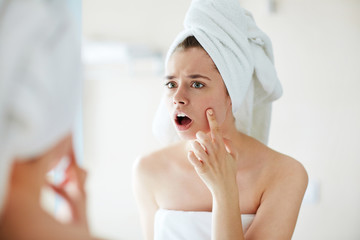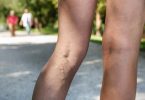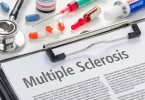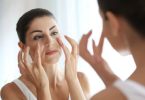Acne affects over 50 million Americans on an annual basis and is considered the most common skin condition in the United States, according to the American Academy of Dermatology. There are many causes for acne at any age, whether it be a hormonal imbalance, clogged pores, or poor skin care.
Although there are times where having acne is completely normal, and often even unavoidable, there are cases where it is not. Acne can sometimes be very painful and severe in regards to intensity, size, or even in terms of frequency in breakouts.
Even for those suffering from minor cases of acne may feel like something needs to be done on a dermatological level, especially if they are experiencing anxiety, shame, emotional distress, or pain as a result of their breakouts.
While many try various face washes and numerous acne treatments, they may find that nothing seems to aid their acne in its entirety. However, by understanding some of the most common types of acne, one can potentially find a solution based on the type(s) of acne they are personally suffering from.
What Are the 6 Different Types of Acne?
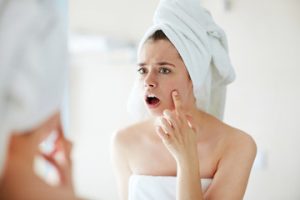
Consider the following six different types of acne:
1. Papules
Papules, sometimes simply referred to as skin lesions, are often very tiny in size (5 centimetres or less), pink or red in colour, and often form in tight clusters in a rash-like manner. On occasion, papules can be painful. While nobody admires having acne of any type, the good news is, papules only last a few days on average.
There are several reasons why one might suffer from papules. They can appear due to a hair follicle blockage, eczema, or the chicken pox virus. Most commonly, however, papules are said to be a result of dermatitis, which can flare up because of makeup or soap. Papules do not form due to infection or disease. They are also not contagious.
It is advised not to pop, squeeze, or puncture papules from home as they can become red and inflamed, potentially leaving scarring as a result. Witch Hazel, apple cider vinegar, a honey face mask, fish oil supplements, and zinc supplements may aid with papules.
2. Pustules
Pustules, which are similar in name as papules, are very different types of acne. Pustules look like small blisters and appear red, inflamed, and have a white center (pus). They are usually what we visualize in our heads when we think of acne. These bumps can grow large and may be present on any part of the body.
A great way to remember the difference between a papule and a pustule is that a PUStule contains a center filled with pus while a papule does not. However, like a papule, pustules do not normally last very long. It takes approximately four or five days for a pustule to disappear on its own naturally.
This type of acne often forms due to clogged pores. In fact, pus is present inside of pustules often because there is an infection within the pore cavity. Pores usually clog because of makeup use, not caring for one’s skin properly, bacteria or dirt buildup, hormonal imbalances or fluctuations, excessive oil production, or sweaty or oily skin.
Like papules, it is not advised to touch or puncture pustules. Squeezing pustules can encourage the pus and bacteria to delve deeper into the skin, often resulting in further redness, swelling, and possible scabs or pits in the skin. Warm compresses, acne spot treatment, and prescription medications are helpful for pustule breakouts.
3. Nodules
Large, inflamed bumps known as nodules form deep within the skin, and thus, usually, have a longer healing time than other forms of acne. Nodules are generally hard to the touch, can be red or skin-colored, and may have a head. Sometimes, nodules are painful upon being touched and might appear inflamed.
A buildup of dead skin cells, overproduction of oil, or an overgrowth of acne-triggering bacteria can all contribute to the nodular formation of the skin. Taking good care of your skin and letting your skin breathe every now and then is important in the prevention of nodular acne.
While many consider nodules embarrassing as they are large and distracting, there are ways you can speed up its healing process. Popping them is not one of them. Instead, apply warm compresses, apply ice to bring down pain and swelling, and add acne spot treatment that contains 2% benzoyl peroxide to the nodule after washing your face.
Because nodules can take weeks or months to heal and are considered to be a severe form of acne, it is also advised to set up a dermatologist appointment for treatment in the form of medication injections or oral medication prescriptions, acne extraction, chemical peels, laser therapy, and the like.
4. Cysts
Nodules look similar to cysts. Both nodular and cystic acne can appear larger than your average pimple and can be painful to the touch. Cysts, like nodules, occur when there is an infection deep under the skin. Cystic acne is red in color, swollen, filled with pus, and may even itch.
Hormonal imbalances or changes during puberty (e.g., elevated levels of testosterone), trapped pores, overactive oil glands, and a buildup of bacteria or dead skin cells can create an environment for cystic acne to thrive.
When it comes to getting rid of cystic acne bumps, like other types of acne, popping them can result in more acne as the bacteria spreads. Usually, over-the-counter treatments are not very successful with cystic acne, and these lesions may last multiple weeks.
Icing cystic acne, opting for oil-free moisturizer, and using medicated spot treatment in early cases of cystic acne can help prevent or diminish the intensity of its appearance before it breaks out full force. Once cystic acne has fully developed, your dermatologist can help. Cysts usually respond very well to medication injections.
5. Blackheads
Blackheads are exactly what they sound like: a type of acne that is characterized by a black head, often very tiny. They may also appear dark brown in color. Blackheads develop when a hair follicle or pore is clogged with skin debris, bacteria, and/or oil. The pores of blackheads are open rather than closed.
Some people wonder why blackheads appear black or brown in color. Since the pore of a blackhead is open, this allows oxidation to occur on the surface. In turn, this creates the dark color we see when we look at a blackhead.
Humidity, sweating, tight clothing, overproduction of oil, hormonal imbalances, and the use of skin products containing alcohol or an oil base can contribute to blackhead development. Thus, it is important to keep the skin clean, opt for the right skin products, and wear looser clothing if you struggle with frequent blackhead breakouts.
Refrain from squeezing or rubbing your blackheads as this could potentially make them worse. Exfoliation, the use of non-comedogenic skin products and makeup, prescription treatments, and keeping stress levels under control may aid with current or future blackhead breakouts.
6. Whiteheads
Like blackheads, whiteheads are very tiny in size, however, are white or skin-colored. Whiteheads are similar to blackheads in that they involve pores clogged by skin debris, bacteria, and/or oil. However, rather than the pores of whiteheads being open, they are closed.
The potential causes of whiteheads are the same as blackheads. Humid weather, heavy sweating, skin oil overproduction, hormonal imbalances, and the use of skin products featuring alcohol or having an oily base can all contribute or exasperate the development of whiteheads.
Like blackheads, instead of touching or try to remove whiteheads at home, opting for prescription treatments, using non-comedogenic products on the skin, regular exfoliation, and balancing your stress are vital in eliminating and/or preventing whitehead breakouts. Salicylic acid is also said to be successful in treating whiteheads.
According to the American Academy of Dermatology, various at-home and professional laser and light treatments can aid with both whiteheads and blackheads, as well as other types of acne. These treatments can include infrared light; photopneumatic therapy; photodynamic therapy (PDT); and blue, red, and blue & red light technology.
Conclusion
There’s not a single person on this planet that enjoys the look and feel of having acne on their face or body. Many feel embarrassed when it comes to the physical characteristics of different types of acne. However, the good news is, many types and intensities of acne can be considered normal.
However, there are cases of acne that may not be considered “normal” but rather severe, very painful, and long-lasting, sometimes taking weeks or even months to clear up. For some folks, they may deal with frequent acne breakouts that lower their self-esteem, social skills, and even their overall happiness.
Regardless of the cause for one’s acne, there are many treatment options and home remedies available to heal or at least reduce the appearance and pain associated with such. Face washes, facial brushes, face masks, acne spot treatments, hormonal treatment, a different skin care regimen, or professional dermatologist care may assist.

